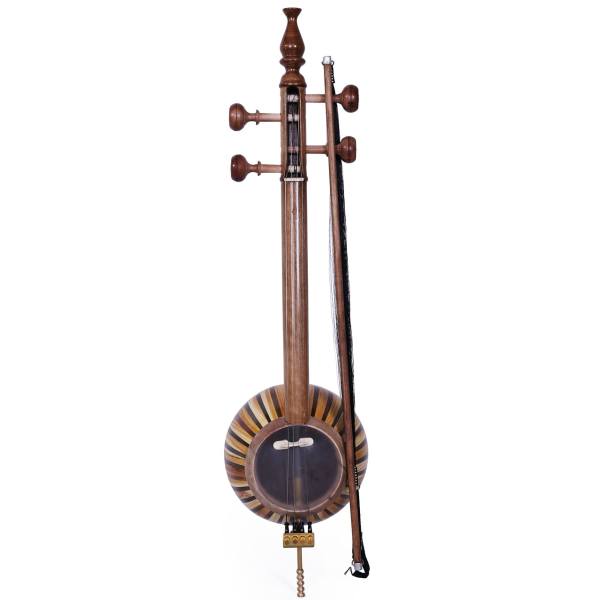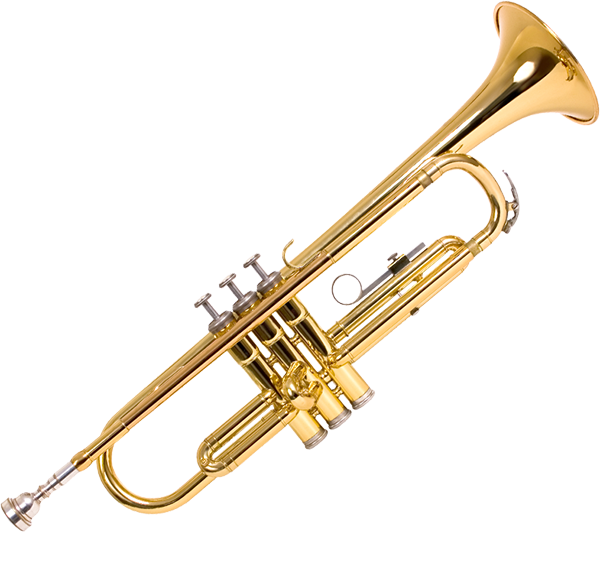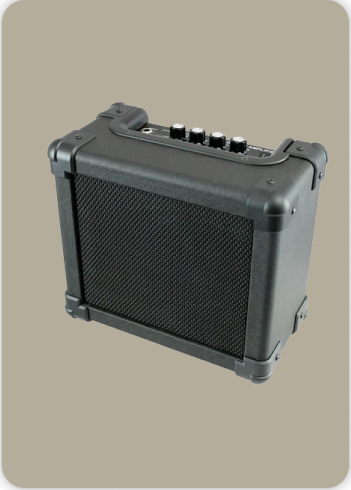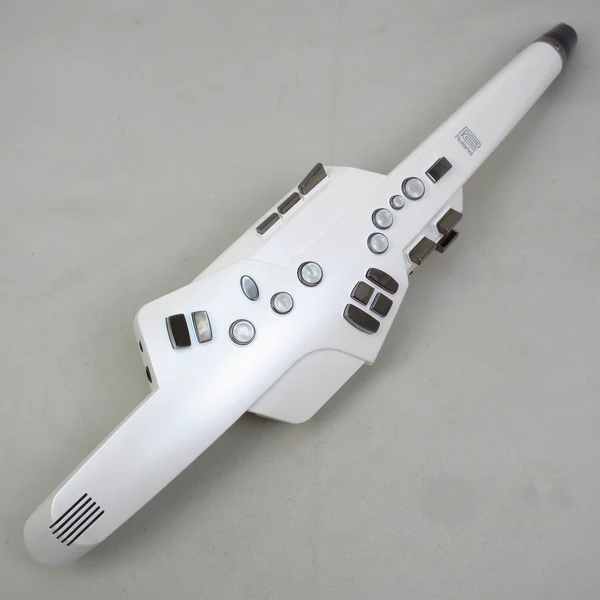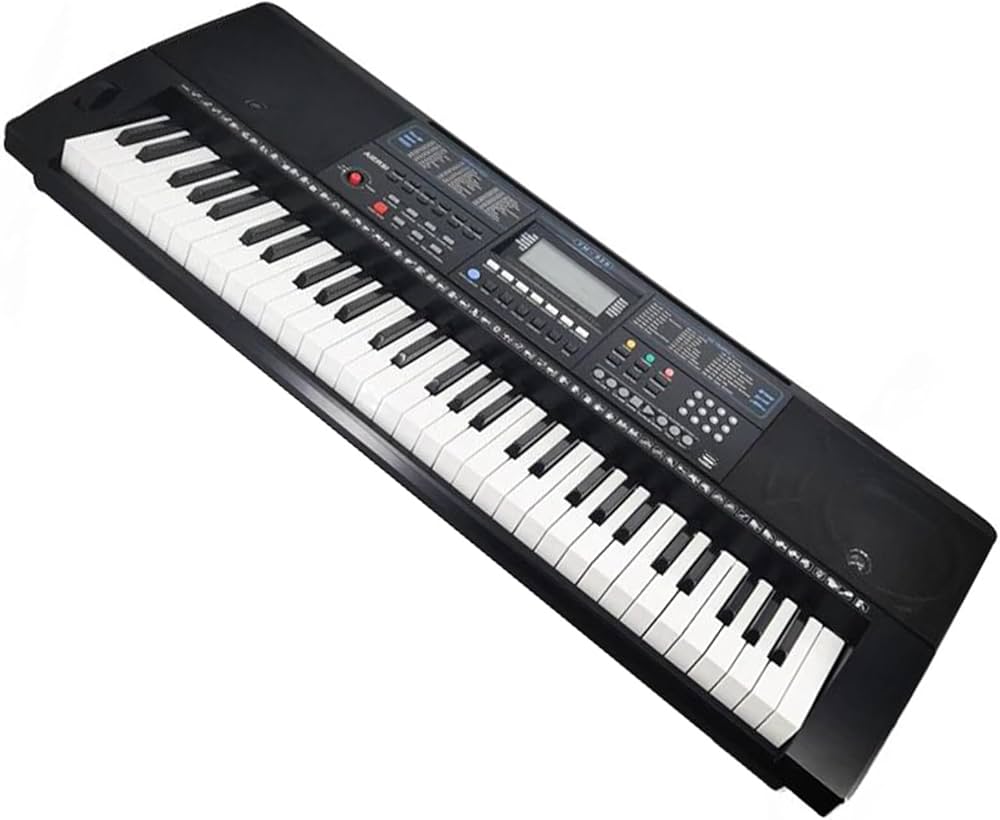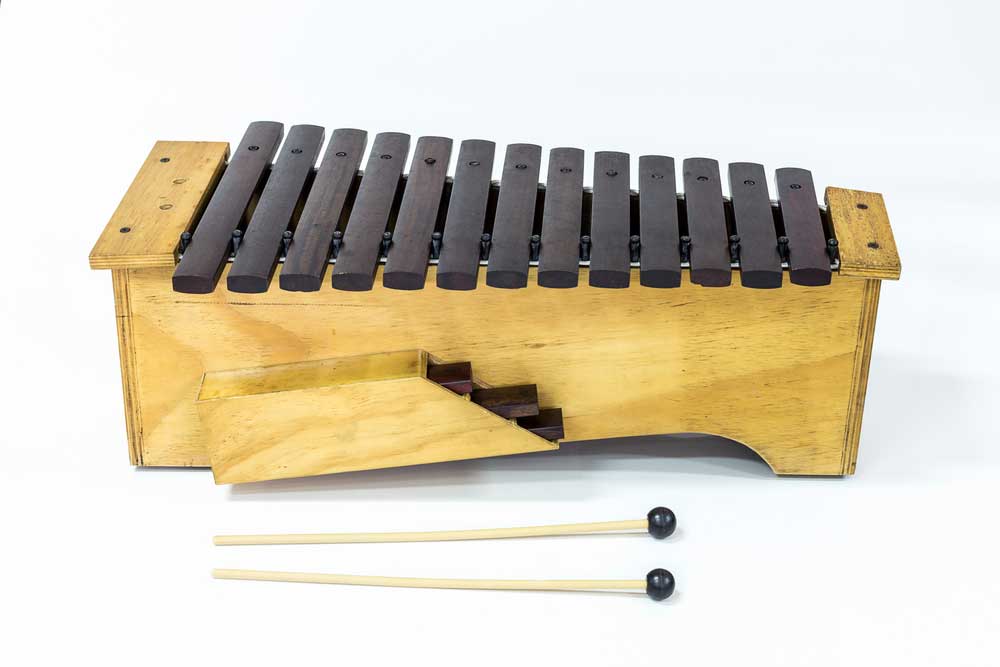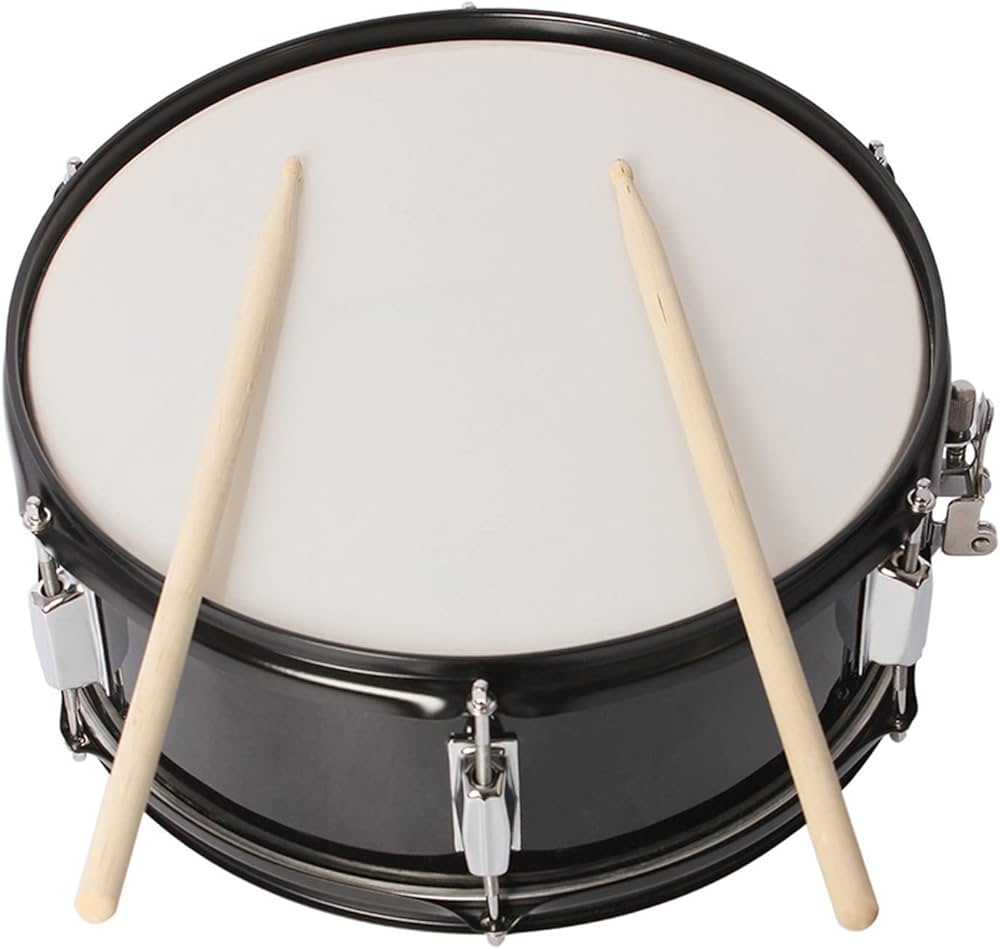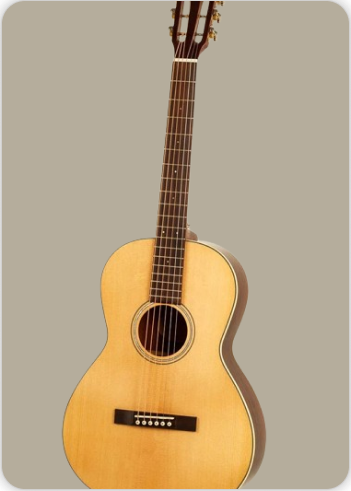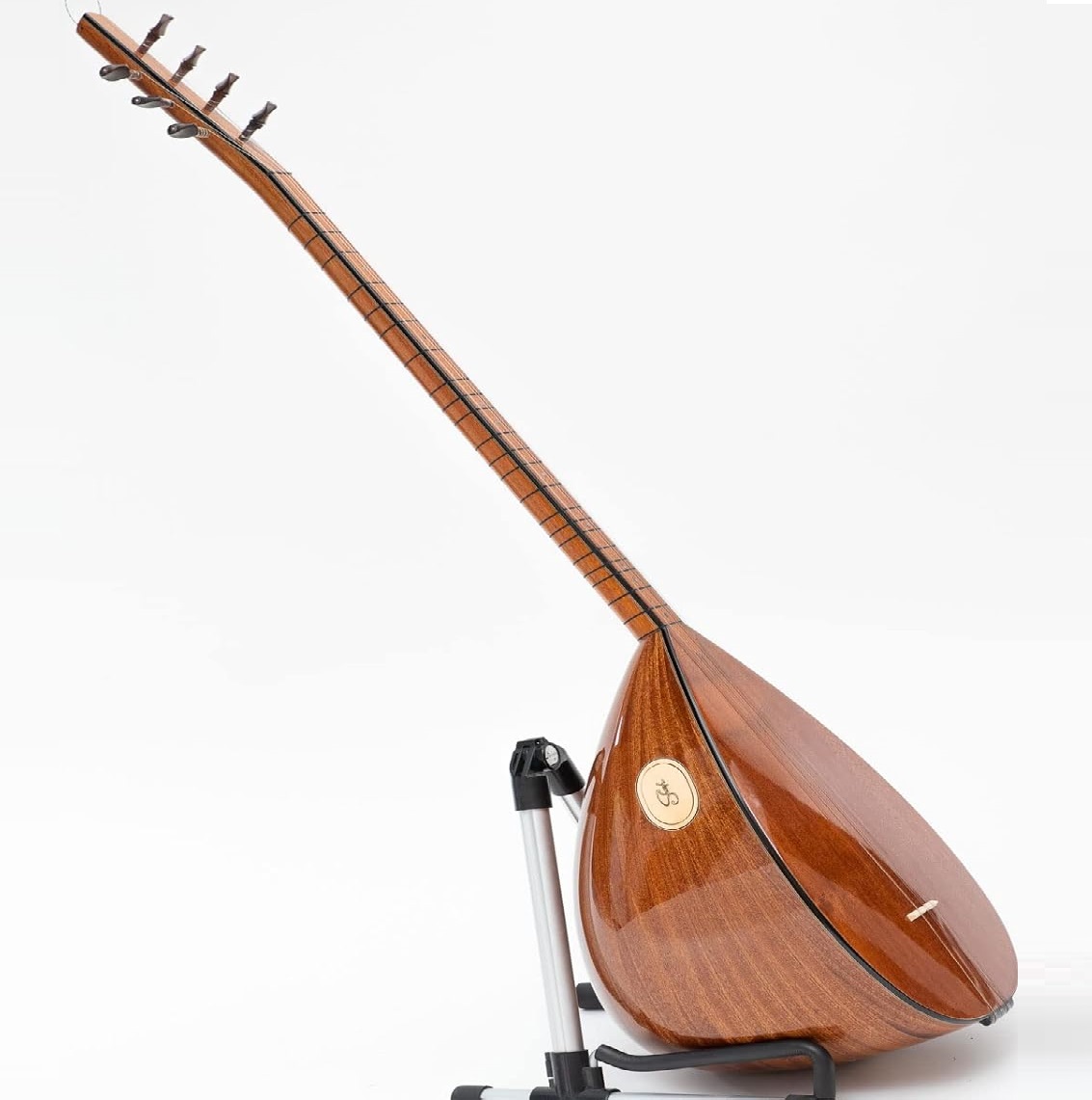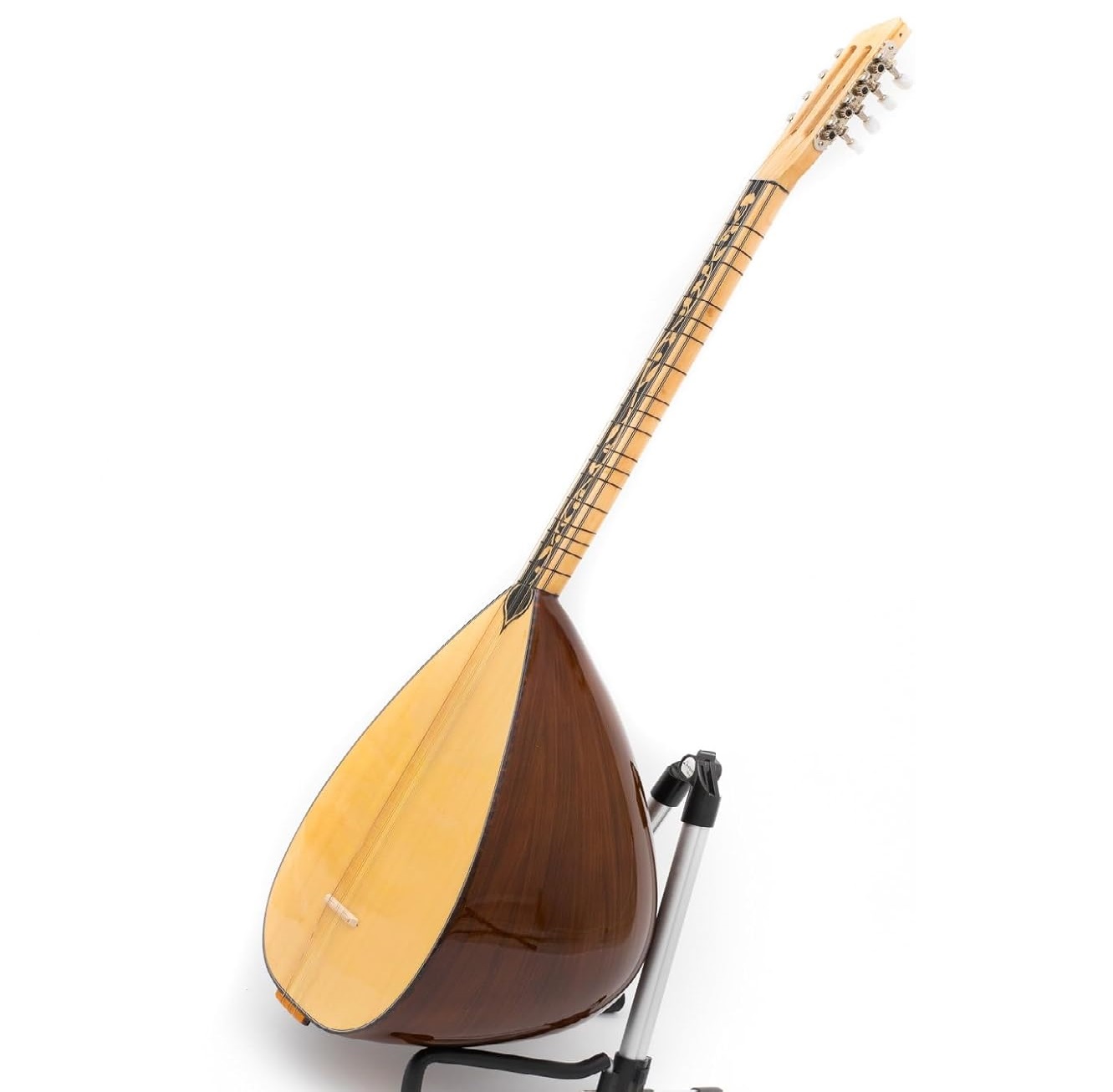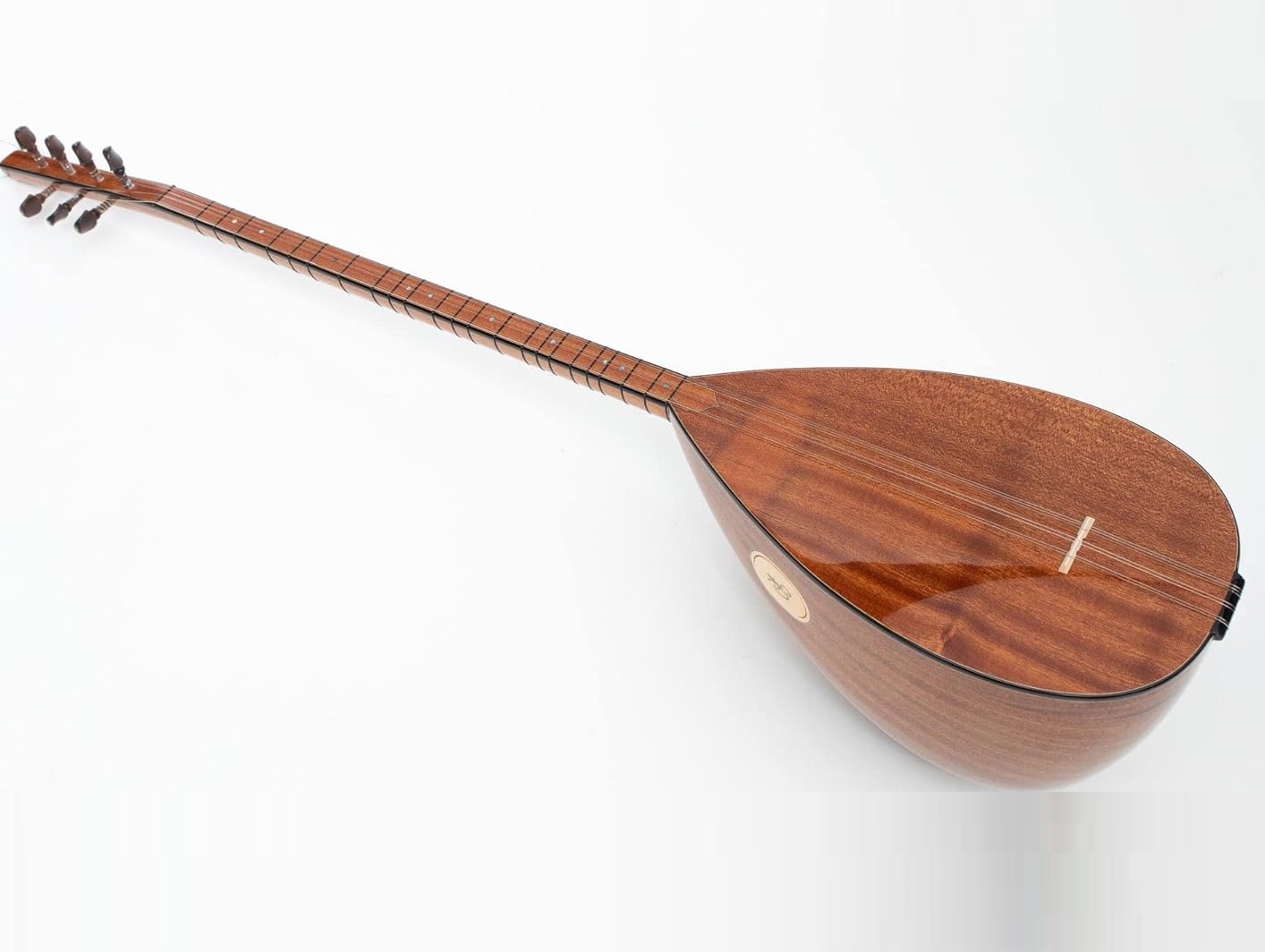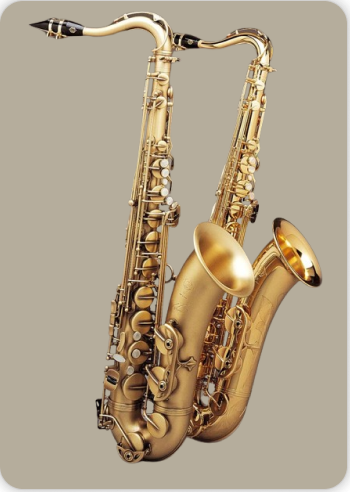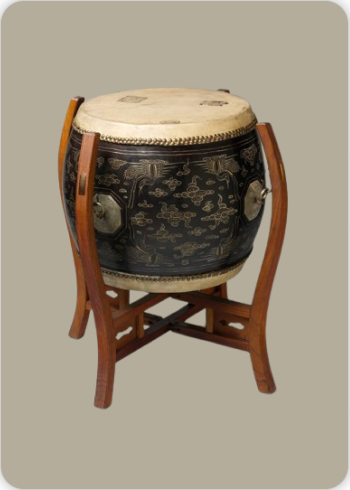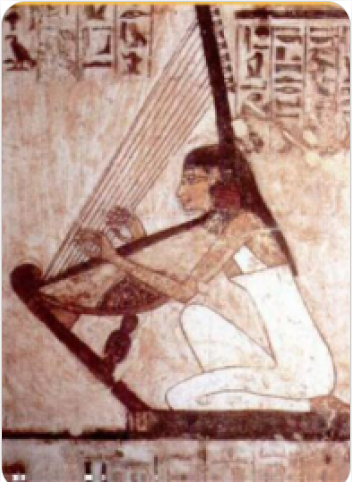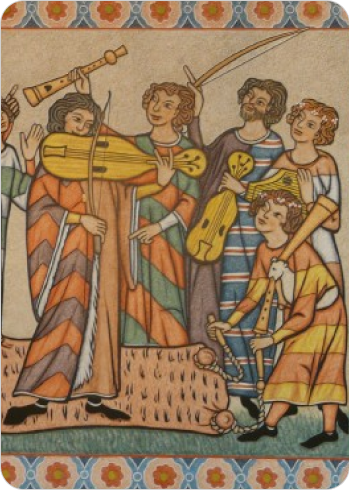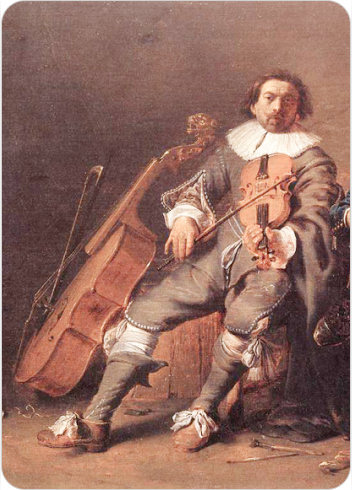Saz
Plucked Instruments
Middle East
Between 1001 and 1900 AD
Video
The saz, also known as the bağlama, is a long-necked, plucked string instrument that holds a central place in Turkish music and the wider musical traditions of the Middle East and Central Asia. Its most recognizable features are its elongated neck, which can be either long or short, and its pear-shaped, resonant wooden body. The saz is classified as a member of the lute family, and its construction and playing style set it apart from other stringed instruments. The body of the saz is typically crafted from mulberry, walnut, or similar hardwoods, and is either carved from a single block of wood or assembled from multiple ribs that are glued together, creating a rounded, hollow chamber that amplifies the sound produced by the strings. The soundboard, which covers the front of the body, is made from thin strips of wood, sometimes in contrasting colors, lending the instrument a distinctive, decorative appearance.
Type of Instrument
The saz is classified as a plucked string instrument, specifically a long-necked lute. As a member of the lute family, it shares structural similarities with other lutes, such as the oud and the Greek bouzouki, but is distinguished by its longer neck and unique tuning system. The saz is a chordophone, meaning it produces sound through the vibration of stretched strings, which are plucked or strummed by the player. The instrument’s design allows for a wide range of pitches and tonal colors, making it suitable for both melodic and harmonic playing. The saz is typically tuned in courses, with each course consisting of two or three strings tuned in unison or octaves, depending on the musical context and regional tradition. This arrangement allows for both drone and melody strings, enabling the performer to create complex textures and rhythmic patterns.
History of the Saz
The history of the saz stretches back many centuries, with its origins believed to lie in ancient Central Asia. The instrument’s ancestors were likely simple, three-stringed lutes made from gourds and animal skin, used by nomadic peoples for ritual and entertainment purposes. As these early lutes spread westward along trade routes and through cultural exchanges, they evolved in form and function, eventually giving rise to the modern saz. By the 13th century, the saz had become established in the Anatolian region, where it quickly gained popularity among the peoples of what is now Turkey. The instrument flourished during the Ottoman Empire, becoming an integral part of both folk and classical music traditions.
In the Ottoman court, the saz was used to accompany poetry, storytelling, and ceremonial music, while in rural areas, it became the preferred instrument of bards and minstrels, known as aşık or ozan, who used it to accompany their songs and epic tales. The saz’s association with the aşık tradition cemented its status as a symbol of Turkish cultural identity, and its music became a vehicle for the expression of social, political, and spiritual themes. Over the centuries, the saz continued to evolve, with different regions developing their own variations in size, tuning, and playing technique. In the 20th century, the saz experienced a revival as part of a broader movement to preserve and promote traditional Turkish music. It became a symbol of national pride and cultural heritage, featured prominently in state-sponsored ensembles and music education programs.
Today, the saz is played not only in Turkey but also in neighboring countries such as Iran, Azerbaijan, and the Balkans, where it is known by different names and incorporated into local musical traditions. The instrument’s enduring popularity is a testament to its adaptability and expressive power, as well as its deep roots in the cultural history of the region. The saz’s journey from ancient Central Asia to the modern concert stage reflects the dynamic interplay of tradition and innovation that characterizes the musical cultures of the Middle East and beyond.
Construction and Physical Structure
The construction of the saz is a testament to the skill and artistry of traditional instrument makers, who combine time-honored techniques with careful attention to detail to produce instruments of exceptional quality and beauty. The body of the saz is typically made from a single block of hardwood, such as mulberry, walnut, or maple, which is hollowed out to create a resonant chamber. In some cases, the body is assembled from multiple ribs or staves of wood, glued together to form the characteristic pear-shaped silhouette. The soundboard, which covers the front of the body, is made from thin strips of spruce or similar softwood, chosen for its acoustic properties. The soundboard may be decorated with inlays or contrasting strips of wood, adding to the instrument’s visual appeal. The neck of the saz is long and slender, usually made from a single piece of hardwood, and is attached to the body with a V-joint for stability and strength.
The neck features a series of tied-on frets, made from nylon or gut, which are spaced according to the microtonal intervals used in Turkish and Middle Eastern music. The number and placement of the frets can be adjusted to accommodate different modal systems, giving the saz its characteristic flexibility and versatility. At the end of the neck is the tuning head, which is set at a slight angle and fitted with T-shaped friction pegs for tuning the strings. The strings themselves are made from steel or nylon, and are arranged in courses of two or three strings each, with the total number of strings varying from six to twelve depending on the type of saz and regional tradition. The strings are anchored at the base of the body, pass over a small wooden bridge, and are stretched along the length of the neck to the tuning pegs. The bridge is a critical component, transmitting the vibrations of the strings to the soundboard and amplifying the instrument’s sound.
The pick, or mızrap, used to play the saz is typically made from plastic, tortoiseshell, or similar materials, and is designed to produce a clear, articulate sound when plucking or strumming the strings. Some players prefer to use their fingers, especially when playing softer, more intimate pieces. The overall design of the saz emphasizes both durability and acoustic performance, with each component carefully crafted to contribute to the instrument’s distinctive sound and playability. The construction process is labor-intensive and requires a deep understanding of materials, acoustics, and traditional methods, making each saz a unique work of art as well as a functional musical instrument.
Types of Saz
The saz family encompasses a variety of instruments, each with its own unique characteristics and musical applications. The most common type is the bağlama saz, which features a medium-sized body and a long neck, typically with six or seven strings arranged in three courses. The bağlama is the most widely used saz in Turkish folk and classical music, prized for its balanced sound and versatility. Another important type is the cura saz, which is smaller in size and produces a higher-pitched, brighter sound. The cura is often used for fast, rhythmic passages and is popular in regional folk music ensembles. The divan saz is larger than the bağlama, with a deeper, more resonant tone, making it suitable for accompanying vocal performances and providing a rich harmonic foundation. The meydan saz is the largest member of the family, with an even deeper sound and a commanding presence, often used in ceremonial or ensemble settings. In addition to these traditional types, there are also modern variations such as the electric saz, which incorporates electronic pickups and amplification for use in contemporary music genres.
The electric saz allows for greater volume and a wider range of tonal effects, making it popular among musicians who perform in large venues or with amplified ensembles. Each type of saz is distinguished by its size, tuning, and number of strings, as well as by regional variations in construction and playing technique. The diversity of saz types reflects the instrument’s adaptability and its central role in the musical traditions of Turkey and the surrounding regions. Whether played as a solo instrument or as part of an ensemble, the saz offers a wide range of expressive possibilities, from delicate melodic lines to powerful rhythmic accompaniment.
Characteristics of the Saz
The saz is renowned for its distinctive sound, which is both resonant and expressive, capable of conveying a wide range of emotions and musical styles. Its long neck and movable frets allow for the execution of complex modal scales, ornamentations, and microtonal intervals that are characteristic of Turkish and Middle Eastern music. The instrument’s sound is warm and full-bodied, with a rich harmonic spectrum that lends itself to both melodic and harmonic playing. The saz is capable of producing both soft, lyrical melodies and energetic, rhythmic accompaniments, making it suitable for a variety of musical contexts. Its versatility is further enhanced by the different types and sizes available, each with its own unique tonal qualities and playing techniques. The saz is traditionally played with a pick, which allows for rapid strumming and intricate plucking patterns, but some players prefer to use their fingers for a softer, more nuanced sound. The instrument’s construction and tuning systems are designed to accommodate the modal systems of Turkish and Middle Eastern music, with movable frets that can be adjusted to produce the microtonal intervals required by different modes.
The saz’s expressive capabilities are further enhanced by the use of ornamentation, vibrato, and other playing techniques that allow the performer to infuse the music with personal expression and emotional depth. In addition to its musical attributes, the saz is also valued for its cultural significance, serving as a symbol of Turkish identity and artistic heritage. Its presence in folk music, classical compositions, and contemporary genres attests to its enduring popularity and versatility. The saz’s ability to evoke emotions, tell stories, and connect people to their cultural roots has ensured its place as one of the most beloved and respected instruments in the musical traditions of Turkey and the wider region.
Playing Techniques and Sound Modifications
The saz, also known as the bağlama, is renowned for its expressive versatility and the variety of playing techniques that have evolved across centuries. Traditionally, the saz is played by plucking the strings with a plectrum called a mızrap or tezene, which can be made from cherrywood bark or plastic. This method produces a bright, resonant sound that is characteristic of Turkish folk and classical music. In addition to plectrum playing, fingerpicking techniques are widely used, especially in regional styles such as şelpe or şerpe. This fingerstyle approach allows for intricate melodic lines and percussive effects, giving the performer greater control over dynamics and articulation. A hallmark of saz performance is the use of ornamentation, such as hammer-ons, pull-offs, slides, and trills, which embellish melodies and add emotional depth. Players often employ rapid tremolo picking for sustained notes or rhythmic drive, particularly in dance tunes or dramatic passages. The saz’s long neck, fitted with movable frets tied with fishing line, enables microtonal intervals unique to Turkish and Middle Eastern music. Players can adjust the frets to accommodate different modes (makams), which are essential to the modal system of Turkish music.
Tuning systems, or düzen, are central to the saz’s sound palette. The most common tunings are bağlama düzeni (La-Re-Mi) and bozuk düzen (La-Re-Sol), but regional and personal variations abound. The saz’s three courses of strings—typically arranged as two, two, and three—are tuned in unison or octaves to create rich harmonic textures. Sound modifications also come from the instrument’s construction: the size and shape of the bowl (tekne), the type of wood, and the length of the neck all influence timbre and projection. Modern saz players sometimes use electronic pickups, allowing the instrument to be amplified for contemporary genres like rock and pop. This adaptation has expanded the saz’s sonic possibilities, enabling effects such as reverb and distortion, and facilitating its integration into fusion and world music ensembles.
Famous Compositions
The saz has inspired countless compositions that are now staples of Turkish and Middle Eastern music. Many of these pieces are folk songs, known as türkü, which have been passed down orally through generations. These songs often tell stories of love, loss, heroism, and daily life, reflecting the collective memory and values of the communities from which they originate. Among the most celebrated compositions are “Uzun İnce Bir Yoldayım,” a poignant ballad by Aşık Veysel, and “Mihriban,” a love song popularized by Musa Eroğlu. Both pieces showcase the saz’s ability to convey deep emotion and narrative through its lyrical melodies and expressive phrasing. Other well-known works include “Çeşm-i Siyahım,” “Fikrimin İnce Gülü,” and “Kara Toprak,” each highlighting different regional styles and technical demands. In addition to folk repertoire, the saz features prominently in art music and contemporary compositions. Modern composers have written concert works and experimental pieces for the instrument, exploring its microtonal capabilities and blending it with Western instruments. The saz’s adaptability ensures its continued relevance and inspires new generations of musicians to create innovative works.
Most Influential Players
The history of the saz is inseparable from the legacy of its master performers, many of whom have achieved legendary status in Turkish music. Aşık Veysel Şatıroğlu stands out as perhaps the most iconic saz player and poet. Blind from a young age, Veysel’s heartfelt songs and simple yet profound playing style have made him a symbol of Anatolian folk tradition. Another influential figure is Neşet Ertaş, whose virtuosic technique and soulful voice brought the saz to urban audiences and helped bridge rural and urban musical cultures. His mastery of the instrument and deep understanding of folk poetry have left an indelible mark on Turkish music. Musa Eroğlu, Arif Sağ, and Erdal Erzincan are also renowned for their technical innovation and contributions to the saz’s repertoire. Each has developed a distinctive approach, whether through complex picking patterns, innovative tunings, or collaborations with artists from other genres. Their recordings and performances have introduced the saz to international audiences and inspired countless students.
In the realm of contemporary music, artists like Erol Parlak and Cengiz Özkan have continued to push the boundaries of saz playing, incorporating jazz, classical, and world music influences. Their work demonstrates the instrument’s capacity for renewal and its enduring appeal across generations.
Historical Performances or Concerts
The saz has been central to many significant performances and gatherings throughout history. Traditionally, it was the instrument of choice for aşıklar (minstrels or bards), who traveled from village to village, performing at weddings, festivals, and communal gatherings. These performances were not only musical but also served as vehicles for storytelling, social commentary, and the transmission of cultural values. One of the most celebrated historical contexts for saz performance is the aşık tradition, where poets would engage in musical duels, improvising verses and melodies in a display of wit and artistry. These events, often held in coffeehouses or public squares, were crucial in sustaining the oral tradition and fostering a sense of community. In the modern era, the saz has graced major concert halls and international festivals. Notable performances include Aşık Veysel’s appearances on Turkish radio in the mid-20th century, which brought his music to a national audience. More recently, large-scale concerts such as the “Bağlama Festival” in Istanbul and collaborations with orchestras have showcased the saz’s versatility and elevated its status as a concert instrument. The instrument has also played a role in political and social movements, with performances at rallies, protests, and commemorative events. Its association with the voice of the people has made it a powerful symbol of resistance and solidarity.
Maintenance and Care
Proper maintenance is essential to preserve the saz’s distinctive sound and ensure its longevity. The instrument should be stored in a stable environment, away from extreme temperatures and humidity, which can cause the wood to warp or crack. Regular cleaning with a soft, dry cloth helps prevent dust and grime from accumulating on the body and strings. String care is particularly important, as old or corroded strings can dull the sound and make playing more difficult. Players should replace strings periodically, depending on usage and environmental conditions. When changing strings, it is advisable to clean the fingerboard and check the condition of the frets, which may need adjustment or replacement over time.The movable frets, tied with fishing line, require occasional repositioning to maintain accurate intonation, especially if the instrument is exposed to changes in temperature or humidity. Tuning pegs (burgu) should be checked for smooth operation, and a small amount of peg compound can help prevent slipping or sticking.
For instruments with electronic pickups, connections and cables should be inspected regularly to avoid signal loss or interference. When not in use, the saz should be kept in a padded case to protect it from physical damage. Professional servicing by an experienced luthier is recommended for structural repairs or major adjustments. Regular maintenance not only preserves the instrument’s functionality but also enhances its tonal qualities, allowing players to fully express themselves.
Interesting Facts and Cultural Significance
The saz holds a unique place in Turkish culture and beyond, symbolizing the voice of the people and the continuity of tradition. The word “saz” itself means “instrument” in Turkish, underscoring its central role in the musical life of the region. Its official name, “bağlama,” refers to the act of tying, a nod to the tied frets that distinguish it from other lutes. The instrument’s origins can be traced to ancient Central Asia, with archaeological evidence of similar instruments found in Sumerian and Hittite sites in Anatolia. Over the centuries, the saz has absorbed influences from Persian, Kurdish, Azerbaijani, and Greek musical traditions, reflecting the region’s rich cultural tapestry. One of the most fascinating aspects of the saz is its adaptability. It comes in various sizes and forms, from the tiny cura to the massive divan sazı, each suited to different musical contexts. The saz family includes instruments such as the tambura, bozuk, çöğür, and kopuz, each with its own tuning and playing style.
The saz’s role extends beyond music; it is a symbol of identity, resistance, and social cohesion. In the aşık tradition, the saz is both a musical instrument and a tool for poetic expression, used to address themes of love, justice, and faith. Its presence at weddings, funerals, and communal gatherings underscores its importance in marking life’s milestones. In contemporary times, the saz has found new audiences through collaborations with rock, pop, and world music artists. Its distinctive sound has been featured in international recordings and film scores, introducing global listeners to the nuances of Turkish music.
The saz’s enduring appeal lies in its ability to bridge past and present, rural and urban, traditional and modern. Whether played by a solitary bard in a remote village or amplified on a concert stage, the saz continues to inspire, unite, and move people across cultures and generations.
FAQ
What materials are used to construct a traditional Turkish Saz?
A traditional Turkish Saz is usually made from mulberry or mahogany for the body, spruce for the soundboard, and hardwood like walnut or ebony for the fingerboard. The strings are typically made of steel or a combination of steel and nylon. These materials help produce its resonant, bright sound.
What are the main types of Saz used in Turkish music?
The main types of Saz include the Cura (smallest), the Tambura (medium-sized), and the Divan Saz (largest). Each has a different pitch and is used in various musical settings. These types help cover a wide range of tonal possibilities in Turkish folk music.
What role does the Saz play in Turkish music culture?
The Saz is a central instrument in Turkish folk and classical music, often accompanying poetry and storytelling. It symbolizes cultural identity and is a staple in Alevi religious ceremonies and regional festivities. Its melodic tones convey both joy and lament.
 Links
Links
References
- Bağlama - Wikipedia
- BAGLAMA / SAZ (long-necked bağlama; Turkish stringed instrument)
- Saz History - An Introduction to the Turkish Bağlama Family
- Saz & Baglama Turkish String Instrument For Sale - Sala Muzik
- A Musician's Guide to Saz - Ethnic Musical
- Turkish Saz Baglama Shop | Buy Saz with Free Worldwide Shipping
Other Instrument
Categories
